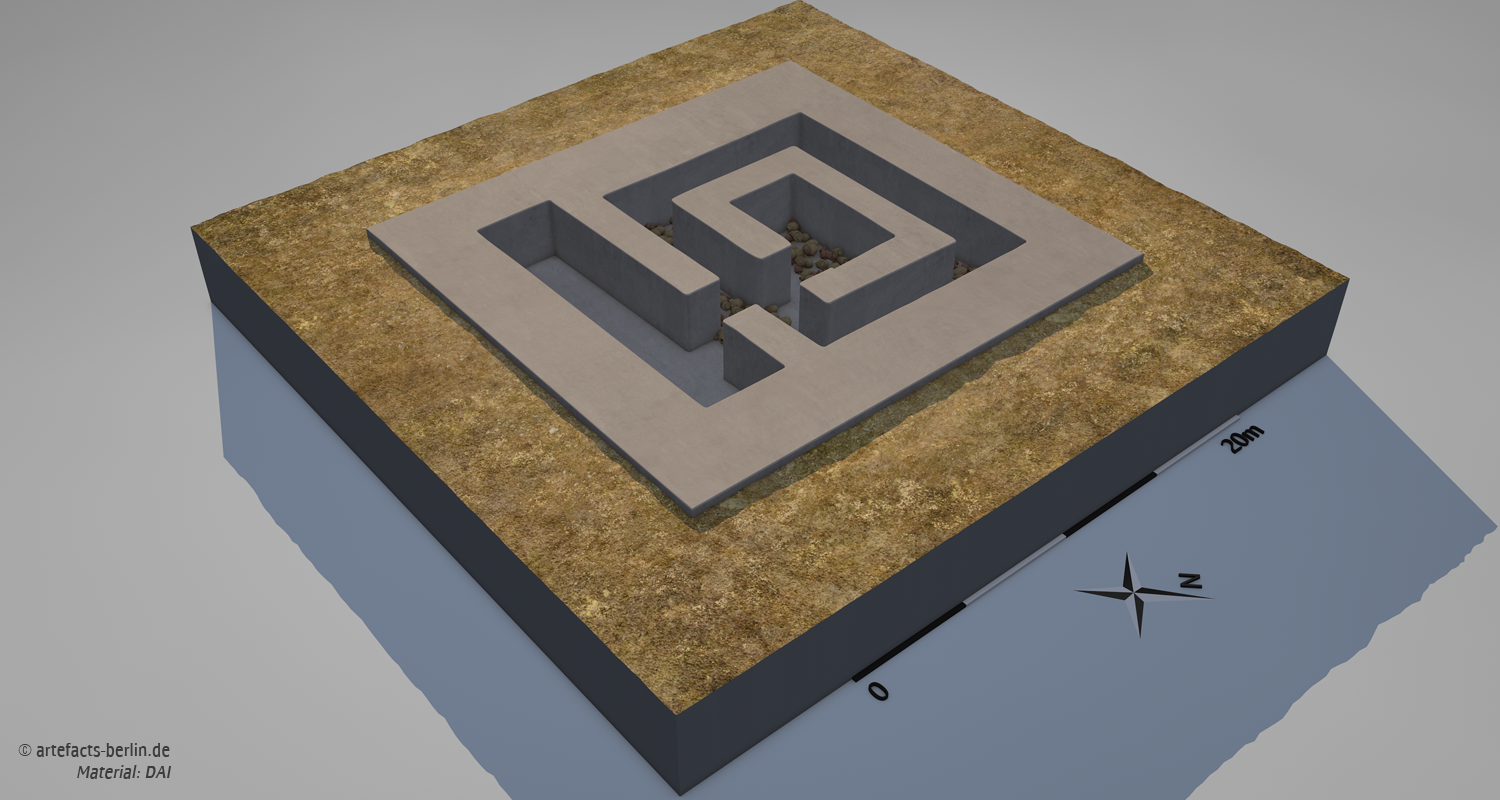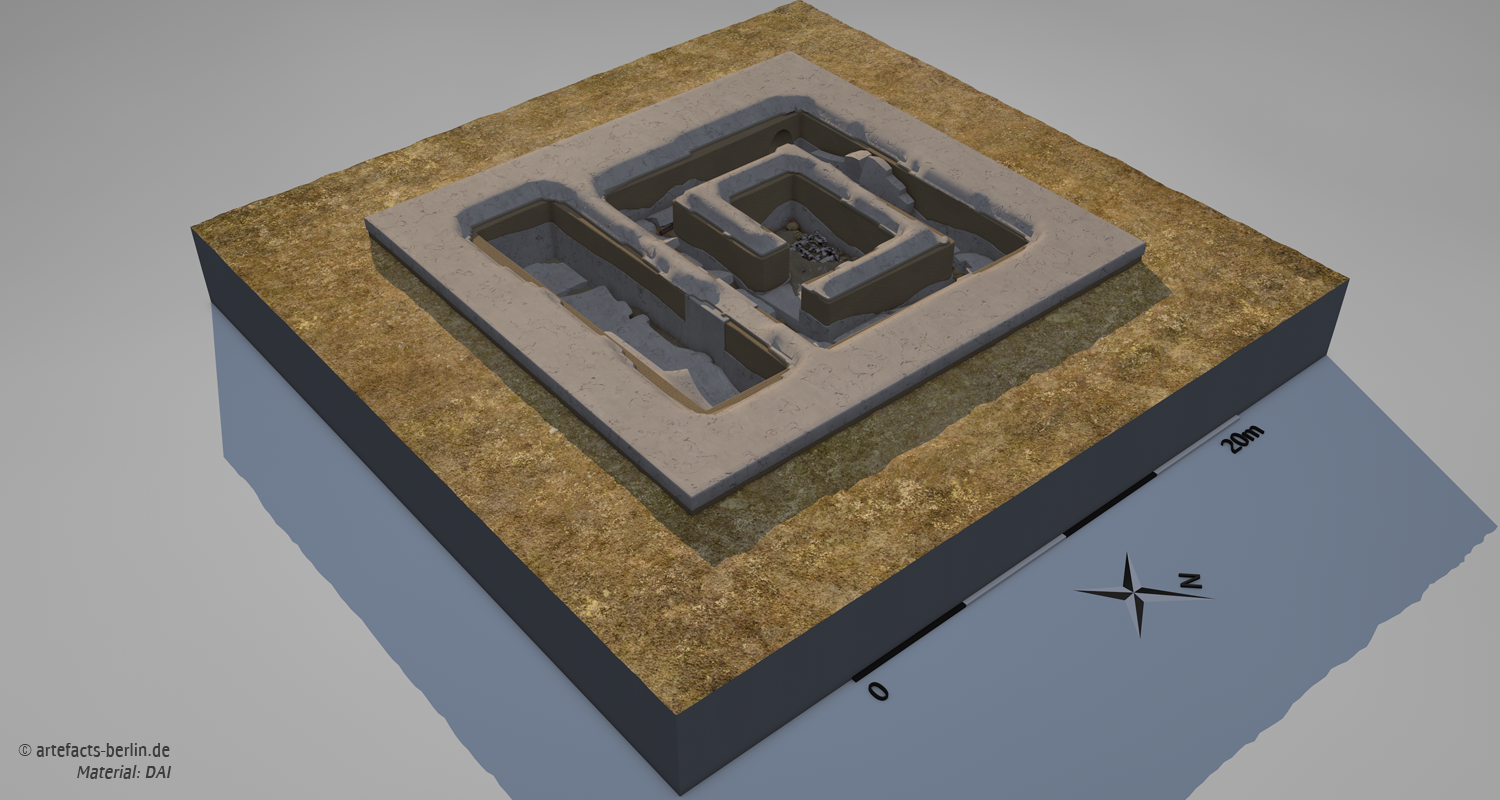About the project
Uruk/Warka, situated in modern-day Iraq, is one of the first cities in the world, and was populated almost without interruption for over 5,000 years – from the 4th millennium BCE to the 1st millennium CE. Uruk is famous for the invention of cuneiform writing at the end of the 4th millennium, the so-called “late Uruk period”. One of the architectural layers of ‘Untersuchungsareal’ 6 in the centre of Uruk carries the so called Riemchen-Building.
We scientifically reconstructed and visualised the Riemchen-Building as part of the TOPOI-Project ‘XXL – Monumentalized Knowledge. Extra-large Projects in Ancient Civilizations’, in close cooperation with the German Archaeological Institute (DAI) in Berlin. The near rectangular building measures around 20 x 18 m. Is was constructed subterranean and was only looking out of the sourounding area. It is assumed, that the building was only accessible through the roof with the help of a ladder. If there was a structure on top of the flat roof, it is unknown.
The building is interesting, because inside the sourounding corridor and central room were a lot of objects found. The function of the building is not clear, but it is possible, that it was a grave of some sort. While constructing the Riemchen-Building, the former Stone-Cone-Building was already demolished, but inside the fundament of the Riemchen-Building, were parts of the Stone-Cone-Building found.
At a certain point, there had to be a fire in the building – at least in the central room. If this was done on purpose as a kind of ritual or was part of the destruction of the building, is unclear.
Literature
- Eichmann, R. 2007: Uruk. Architektur I. Von den Anfängen bis zur frühdynastischen Zeit (=AUWE 14), Textteil und Beilagen, Rahden.



